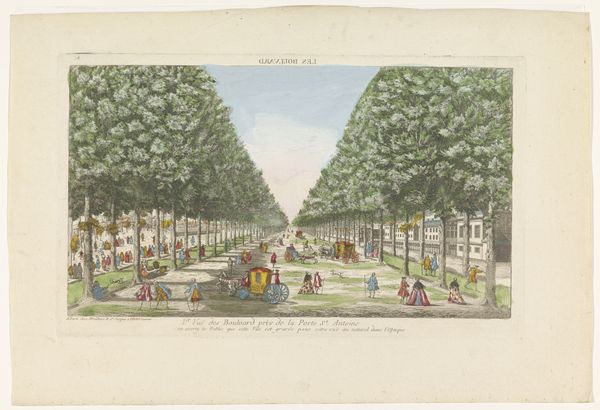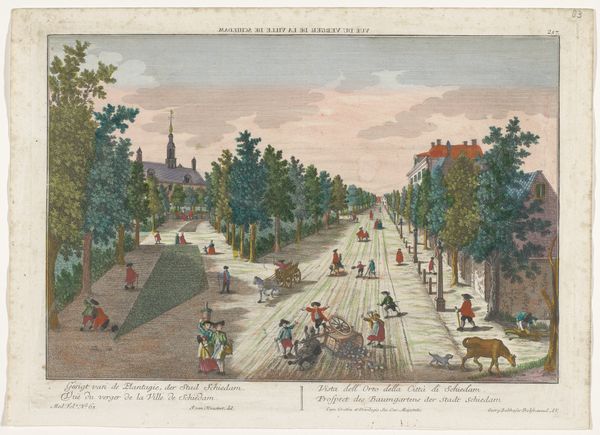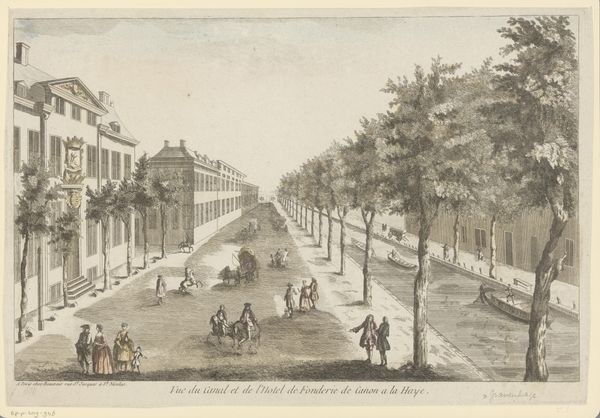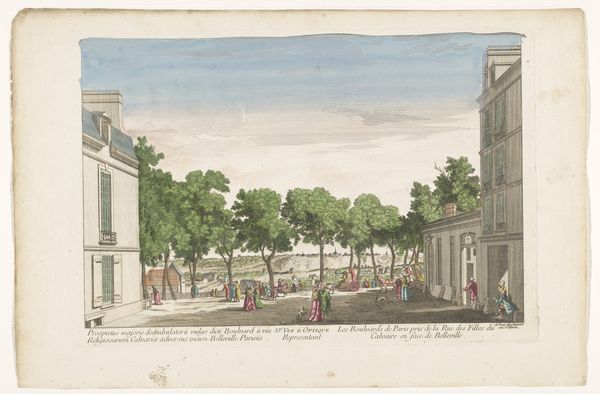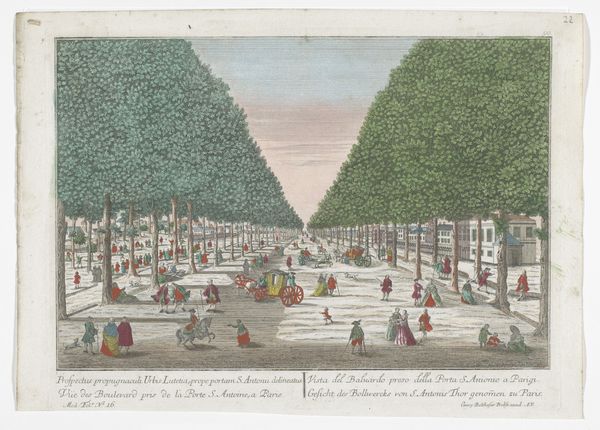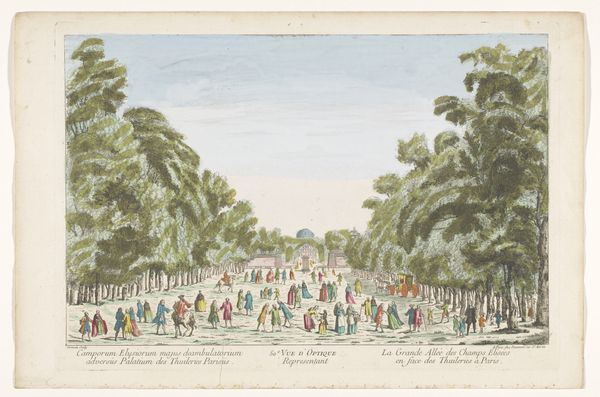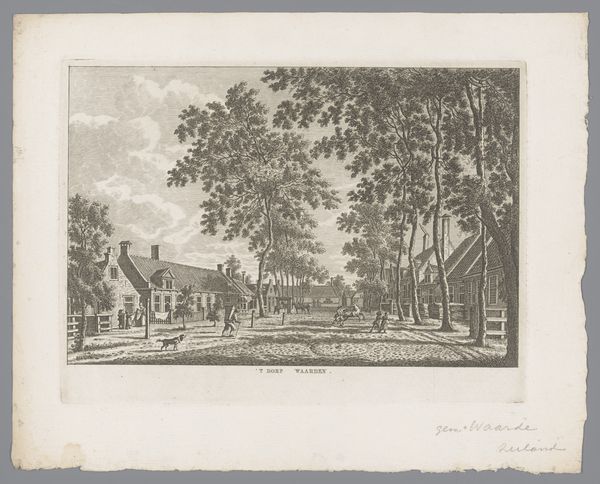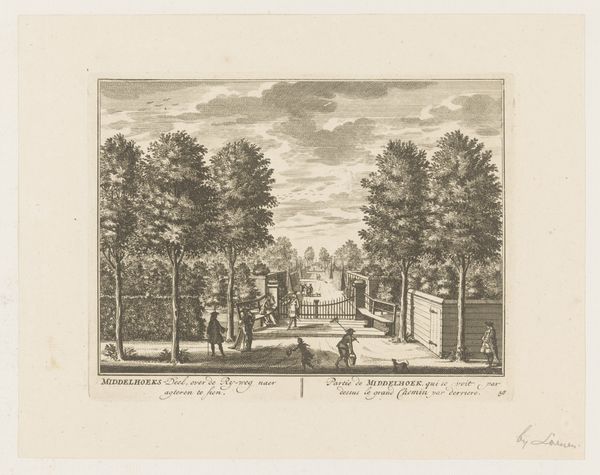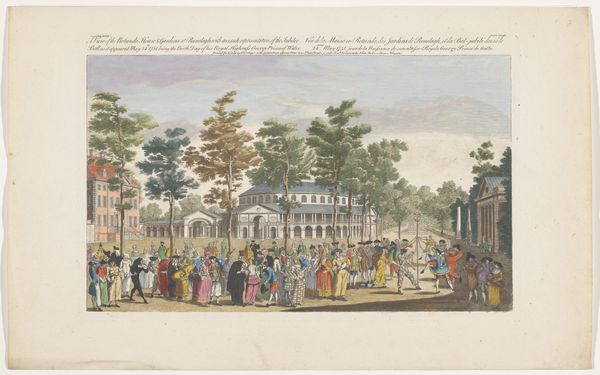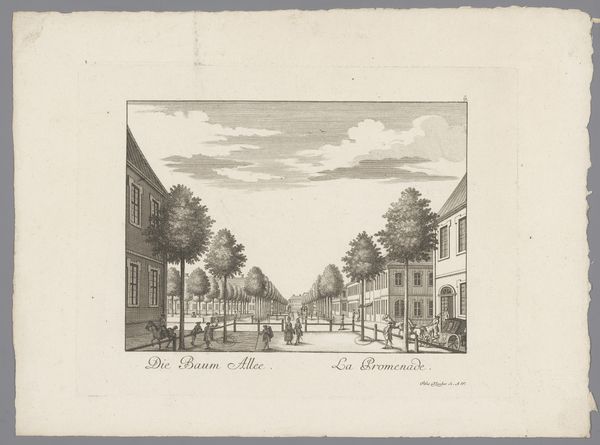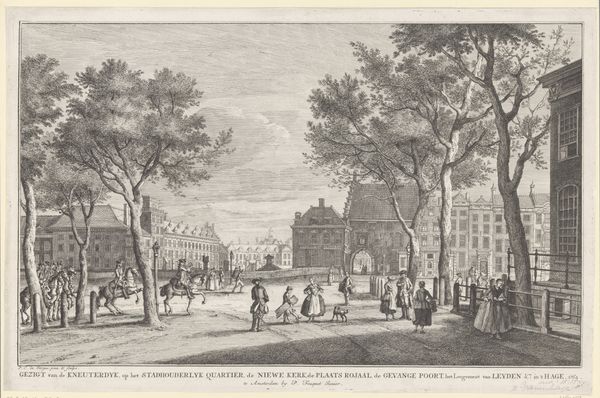
Gezicht op een boulevard te Parijs gezien vanaf de Porte du Temple 1745 - 1775
0:00
0:00
print, etching, watercolor
# print
#
etching
#
landscape
#
watercolor
#
cityscape
#
watercolour illustration
#
genre-painting
#
rococo
Dimensions: height 296 mm, width 411 mm
Copyright: Rijks Museum: Open Domain
Jean-François Daumont made this print of a Parisian boulevard sometime before his death in 1775. It's an engraving, a process that involves painstakingly incising lines into a metal plate, inking it, and then pressing it onto paper. The fine lines give the image a crisp, precise quality, ideal for capturing the architecture and the fashionable figures strolling along the boulevard. Look closely, and you'll notice the subtle coloring; this would have been applied by hand, each print individually touched by an artisan. Engravings like these were luxury items, a form of visual consumption for the wealthy. They offer us a glimpse into the social life of 18th-century Paris, but also remind us of the skilled labor and specialized production required to create even seemingly simple images. Recognizing this labor helps us appreciate the print not just as a picture, but as a material object embedded in a specific time and place.
Comments
No comments
Be the first to comment and join the conversation on the ultimate creative platform.
